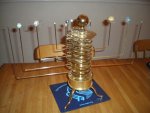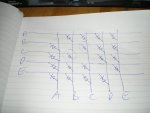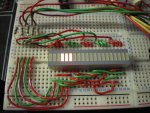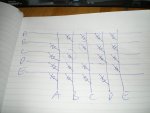Buzby
Senior Member
Hi All,
I need to light any three LEDs from a group of 240.
The lowest hardware solution seems to be Charlieplexing using 16 I/O direct from a PICAXE.
The LED current is reasonably low, and I only need 3 LEDs lit, so no need to scan the whole matrix all the time.
The software is going to be tricky, but I can't start until I know what the matrix looks like, and this is where I'm struggling.
Trying to draw a circuit diagram for the LEDs is getting complicated, and I need a much bigger sheet of paper !.
Does anyone know if there is any software that makes designing the matrix a bit easier ?. Even just a point-to-point wiring list would be OK.
Cheers,
Buzby
I need to light any three LEDs from a group of 240.
The lowest hardware solution seems to be Charlieplexing using 16 I/O direct from a PICAXE.
The LED current is reasonably low, and I only need 3 LEDs lit, so no need to scan the whole matrix all the time.
The software is going to be tricky, but I can't start until I know what the matrix looks like, and this is where I'm struggling.
Trying to draw a circuit diagram for the LEDs is getting complicated, and I need a much bigger sheet of paper !.
Does anyone know if there is any software that makes designing the matrix a bit easier ?. Even just a point-to-point wiring list would be OK.
Cheers,
Buzby




